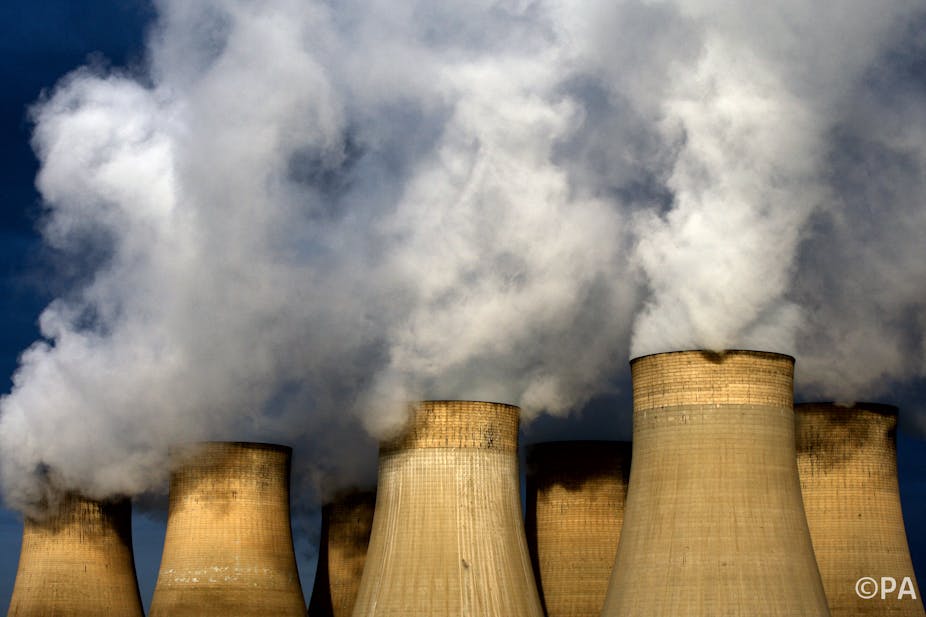When the carbon price collapsed to below €3 in April this year, EU policymakers sought to prop up carbon prices by a deal that would delay the release of carbon allowances (known as “backloading”). This deal was agreed by the European Parliament in July, but has had little impact - prices still languish at around €4-5, well below the highs of €30, the sort of level economists consider necessary to bring emissions under control. Is this a disaster? Does it mean the death of the carbon markets, as many have suggested?
A recent op-ed in the Financial Times made the case that prices do not matter much. The emissions trading scheme (ETS) simply ensures that Europe meets its emissions targets. A low carbon price is not necessarily a sign of trouble. In fact, if - it’s a big if - it’s the result of substantial, sustainable emissions reductions, a low price is a sign of success.
But is the point of the ETS simply to ensure that a short-term cap is met? And if so, can the ETS be considered to be a success?
Let’s look at the second question first - is the EU ETS making a major contribution to reducing short-term emissions at very low cost? Certainly, emissions are declining in Europe. The official numbers show that between 2005 and 2010, industries covered by the EU ETS cut their emissions by roughly 8%. The ETS is doing its job, one might conclude at first glance. However, those regulated by the ETS are, it turns out, no different to other polluters. Over the same period, total carbon emissions in the 27 EU member states fell by just over 8%, which implies there is little difference between those industries regulated by the ETS and those that are not. Two preliminary studies (Jaraite and Di Maria, 2011 and Calel, 2013) directly compare them, and neither uncovers any systematic difference.
If the EU ETS isn’t doing the bulk of the work, what is driving the fall in emissions? Most studies (see, for instance, Anderson and Di Maria, 2011; Cooper, 2010; Kettner et al., 2011; Bloomberg New Energy Finance, 2009) suggest that the lion’s share of cuts has been driven by other factors such as the EU’s energy efficiency and renewables targets, the recession, and the high price of oil. The ETS has an impact too, but it cannot take credit for the majority of the cuts that have been achieved.
Let’s now return to the first question - what is the point of the EU ETS? Certainly, a major objective is to ensure that a short-term cap is met. But another is to set the direction for the economic transition to a cleaner economy. What really matters is the total emissions produced up to 2050, not just those in the short term. And what matters greatly for the health of our economies is that this transition is undertaken gradually and smoothly. We don’t want to move too fast to begin with, but if we dawdle and move too slowly then a late rush to catch up and consequent upheavals will cost economies dearly. A carbon price of under €5 indicates that the system is sluggish - especially when such low prices can be seen to be the result of recession and financial crisis, not a miraculous decarbonisation of our economies.
Even at these low prices, has the EU ETS sent a signal to businesses that the development of new low-carbon technologies is likely to yield profits in future? Encouraging evidence from some recent studies suggests that, though few in number, some businesses have invested more in R&D and patented more low carbon technologies. This innovation response seems strongest among those businesses that foresee the future will bring a high carbon price.
So while the ETS is not the main driver of low carbon innovation - nor should it be - even in its current state it has encouraged some low carbon innovation. But instrumental to even this modest success, it seems, is that policymakers follow through on the promise that the trading scheme deliver a higher carbon price in the future.
Where does that leave us? Should we worry about low carbon prices? Yes - the rock bottom carbon price is not a sign of success. It simply reflects a glut of permits on the market at a time of low economic activity - permits too numerous and cheap to force businesses to invest in innovative means to cut emissions. Low prices matter because they dampen the signal that low-carbon innovation will pay.
The EU Parliament’s backloading measure does not directly address this, but it buys time for policymakers to cancel carbon allowances which would restore prices to higher levels. A higher carbon price would get the message to businesses that investment in decarbonisation is money well spent for the long term. When at last zero carbon technologies become economically competitive, we can celebrate the collapse of the carbon price. But that is likely to be some time into the future.

